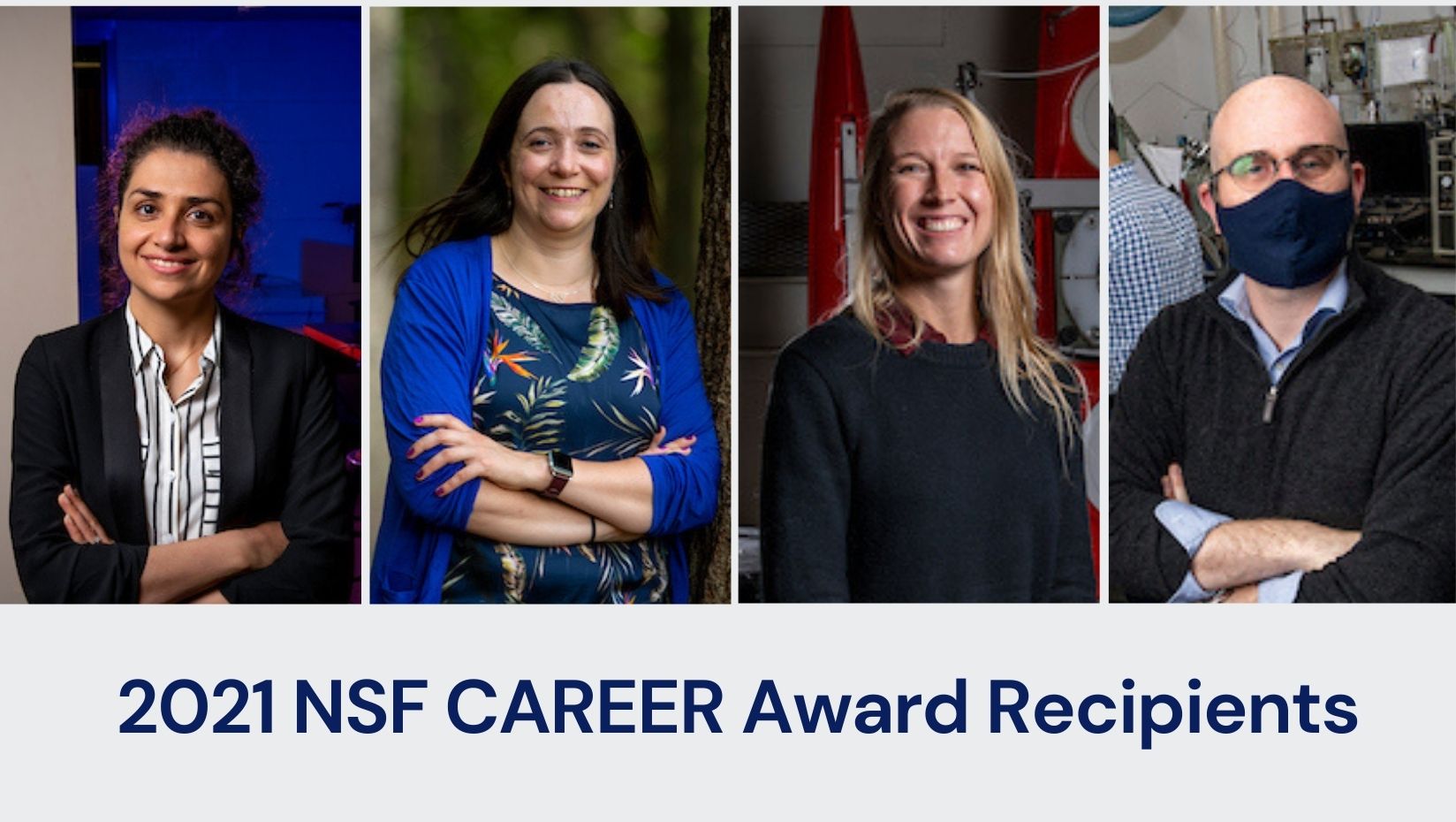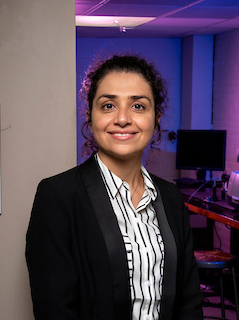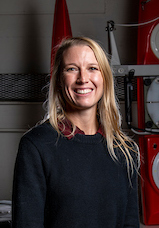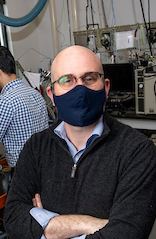
UMaine celebrates highest number of NSF CAREER Award Recipients in 2021
The year 2021 marked a first for UMaine, as four faculty members were selected in the same year for the prestigious National Science Foundation (NSF) CAREER Award, a premier early career funding mechanism, which is intended to support enduring success in scholarship, teaching, and public service.
This prominent award recognizes the exceptional potential of the faculty and their research. In 2021, UMaine’s Sheila Edalatpour, Danielle Levesque, Lauren Ross, and Thomas Schwartz all received awards. These outstanding award recipients are highlighted below.

Sheila Edalatpour, an assistant professor of mechanical engineering at the University of Maine, is studying how the emission of heat changes when the materials involved are quantum-sized, or when they are separated by a gap of the same size as one or multiple atoms. The proposal earned her $526,858 from a NSF CAREER Award. According to Edalatpour, optical and electronic properties can differ between bulk and quantum materials, and therefore, so can how they transfer radiated heat. Determining how material size affects thermal radiation, energy emitted from heated surfaces and transferred from one component to another in the form of electromagnetic waves, can help engineers design new materials to build more efficient, powerful and reliable devices for energy, computing, health care and other purposes. “Quantum size effects provide an excellent opportunity for engineering materials with novel thermal properties suitable for energy conservation and conversion technologies such as thermophotovoltaics, solar cells and smart windows,” Edalatpour says.

Danielle Levesque, a University of Maine assistant professor of mammalogy and mammalian health, will use a National Science Foundation (NSF) CAREER Award of nearly $920,000 to study temperature regulation in diurnal and nocturnal equatorial small mammals in an effort to describe the impacts of climate change on species living in aseasonal tropical environments. “My research lies at the intersection of comparative physiology, ecology and evolutionary biology,” Levesque says. “As an evolutionary and ecological physiologist, I am primarily interested in comparative energetics and evolution of mammalian temperature regulation.” The proposed project will fill a void in the scientific knowledge of mammalian thermoregulation, as much of the previous work has been conducted with northern hemisphere species who live in latitudes with cold temperatures and a great degree of seasonality. Levesque’s work, by contrast, takes place in the consistent equatorial conditions on Borneo.

Lauren Ross, a University of Maine assistant professor of hydraulics and water resources engineering, received a CAREER Award of more than $600,000. This project will improve understanding of how estuary shape, river discharge and tides influence fresh and saltwater mixing. Previous studies into the dynamics of fresh and saltwater blending focus primarily on partially-mixed estuaries, meaning they experience moderate freshwater inflow from rivers, and estuaries with basic dimensions, Ross says. As a result, current research provides less insight into estuaries with complicated topographies like irregular and fluctuating depth and width, headlands and constructions, and estuaries that have relatively large or small freshwater inputs from rivers, all of which can create more or less mixing. Ross, therefore, will use on-site data and numerical model simulations to quantify the mixing processes in more complex estuaries from across the world. Her research will encompass the Penobscot River Estuary, which experiences moderate river input and tides; the Reloncavi Fjord in the Chilean Patagonia, which has large river input and small tides, and the Gironde Estuary in southwest France, which has large river input and tides.

Thomas Schwartz, an assistant professor of chemical engineering at the University of Maine, received a $513,995 NSF CAREER Award to advance his ongoing dissection of the Lebedev process. The well-known, multi-step chemical reaction is used to make butadiene from biomass-derived ethanol. However, little research has been conducted on the Lebedev process at the molecular level. Understanding the intricacies of the process would help researchers create new catalysts, which are necessary for the chemical reactions to make goods from both petroleum and biomass, that would increase butadiene yield. The emergence of improved catalysts could help grow the development of biobased, renewable chemicals. “Synthetic rubber is used in all sorts of consumer products, from car tires to paper coatings. Our goal is to enable production of synthetic rubber from renewable resources,” Schwartz says. The new study builds on the previous research conducted by Schwartz and his UMaine Catalysis Group. He founded the group in 2015 to explore the intricacies of catalysts and the roles they play in chemical reactions used to make fuels and chemicals from carbon-based feedstocks.
These faculty accomplishments add to the record setting year for research at UMaine, in which the university community set a historic high, generating $133.6 million in external funding in support of research and development activities.
Contact: research@maine.edu
